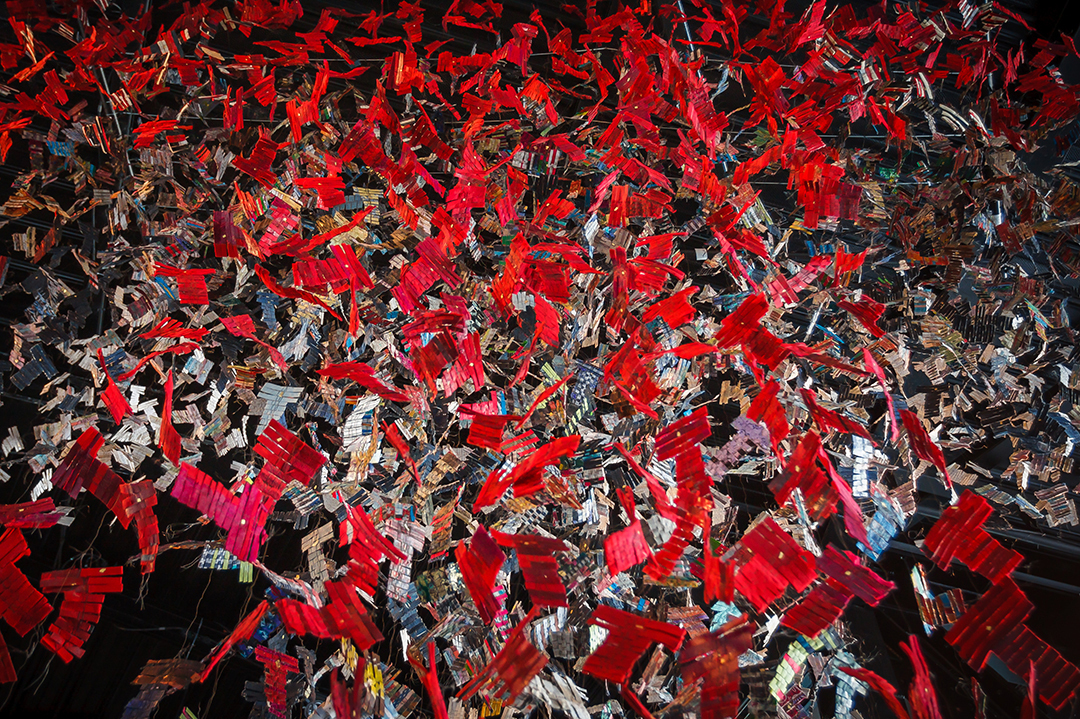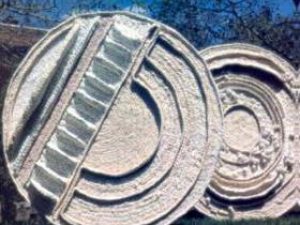Carole Simard-Laflamme
Visual artist
Carole Simard-Laflamme hails from Baie-Saint-Paul (Québec). After studying architecture, she continued with museology studies at the Université de Montréal. In 1989, she represented Canada at the International Textile Competitions, held in Kyoto, Japan.
Since then, the artist has had over 60 solo exhibits and approximately 20 in Canadian and European museums: the Musée de Charlevoix, Musée des arts et traditions populaires (Musée POP) in Trois-Rivières, Madawaska Historical Museum in New Brunswick, Musée d’art contemporain de Baie-Saint-Paul (MACBSP), Musée de la tapisserie de Tournai, Belgium, Musée de l’Ardenne-Charleville-Mézières, Musée Jean-Lurçat et de la tapisserie contemporaine d’Angers, Musée des beaux-arts de Chartres, Musée André Diligent (la Piscine) de Roubaix, Musée des tissus de Lyon, Museo del Traje de Madrid, Museu de Terrassa de Barcelone, as well as the Chapelle de la Salpêtrière de Paris.
In addition, the artist has taken part in 80 group exhibitions in Canada and abroad. She has also produced some 30 large-scale projects that have been integrated into architectural structures. Her work is found in numerous collections in Québec and Europe. She has had several grants from the Conseil des arts et des lettres du Québec and the Canada Council for the Arts.
In spring 2010, she presented two monumental works titled La robe des nations et La robe cathédrale, at the Église Saint-Eustache in Paris, as part of UNESCO’s International Festival of Cultural Diversity. In 2011, she was a guest artist at the Musée Gadagne de Lyon, where she was given carte blanche. In 2012, she presented Les robes du temps autour de la flamme at the Cité internationale de la Dentelle et de La Mode de Calais, during the London Olympics. In 2013, she was a guest artist at Illiers-Combray for the celebration of the 100th anniversary of Marcel Proust’s Du Côté de chez Swann. In 2014, she presented Corps de lumière, a dialogue with the work of sculptor Anthony Caro, in Bourbourg, France, during the 50th anniversary of the CCRD (Coordination Culturelle en Région Dunkerquoise). Then in 2017-2018, La robe des Nations was exhibited at the Musée de la civilisation de Québec. And in summer 2018, l’intégration, Jardin de paroles, étoffe de la mémoire, tissu de la vie was presented at the Musée des beaux-arts, La Cohue in Vannes, France.
She served as the artistic director of the Musée d’art contemporain de Baie-Saint-Paul in 2007-2008. In 2006, she was awarded the Prix de la création artistique en Montérégie by the Conseil des arts et des lettres du Québec. In 2019, she received a Medal of the National Assembly of Québec for her 50 years of creation and her role as a cultural ambassador for Québec.
ARTISTIC PROCESS
Simard-Laflamme’s entire vision of the world involves analogical perception. Like all the works she creates, all aspects of humanity and the world are inextricably woven together and intertwined. Her experimentation with textile techniques has led her to reflect on the relationships between humans and their environment, and generated a desire to break down the walls between disciplines. For example, she associates nature, textiles, clothing, architectural elements and fibre with sounds. Her artworks explore the intertwined relationships between fabric, perception, intuition, identity, emotion, memory and poetry. They attest to the strength of the presence of textiles in modern-day art as an element of belonging, pride and commitment. Nathalie Guimont, FORUM, Sept. 2004. (unofficial translation)
“Personally, having lived my whole life among ropes and braids, I believe that our humanity is intertwined: our body, soul, breath, sounds, writing and all our gestures. Like a coiled wire, first with two twisted ropes, then three, and then many, fibres are woven, interwoven, disordered, merged, subdued, fragmented and coiled again. All this knowledge seems to be inscribed somewhere to reveal the cycles of Nature and our own nature to us.” 1
1 Carole Simard-Laflamme, De Natura, Éditions d’Art Le Sabord, 1998, p. 6. (unofficial translation)




